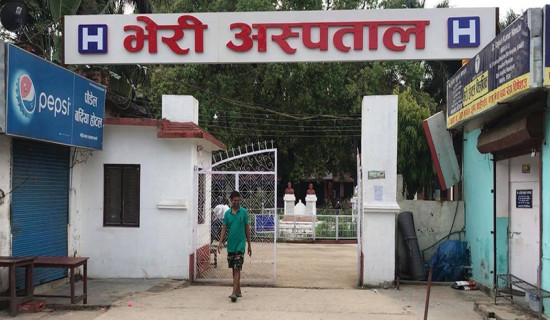- Saturday, 6 September 2025
The Power Of Pamphlets
Dr. Kundan Aryal
Eight decades have elapsed since a group of courageous youths formed a political party, Praja Parishad, in Kathmandu against the autocratic Rana rule. Formed on the ninth of Nepali month of Asar, it secretly distributed pamphlets to make people aware of political matters. It was a quest for democratic rights and breaking of silence and tolerance against the atrocities by the rulers. It was also whistleblowing and the first mass appeal for liberty and human rights. Hence, it was the first mass communication in Nepal on the part of the general public.
The day has great significance in the political history of Nepal because the establishment of Praja Parishad by Tanka Prasad Acharya and his friends marked a clarion call for a revolution.
It was the first attempt followed by three subsequent events that saw the distribution of four different pamphlets. They created a wave of anti-regime sentiment across the country and beyond, making the Rana rulers furious.
Their fury reached its peak when the fourth pamphlet appeared three days after the Rana government published a public notice that stated that the persons who first inform about the distributors of pamphlets would be awarded with Rs. 500.
Death penalty
The government started to round up the rebels. More than 200 youths were nabbed in three months. The revolutionaries who were kept inside the lock-up were tortured harshly. But they did not give up. The government confiscated all properties of leaders and slapped life sentence to them. Some of them even faced the death penalty. Dasharath Chanda, Dharmabhakta Mathema and Gangalal Shrestha were executed for their involvement in the rebellion against the regime. Shastri, who was arrested before the distribution of pamphlet with similar accusation, was also sent to the gallows.
Hence, the pamphlets, a prototype of today's newspapers, triggered a revolt for the political change. Tank Prasad Acharya, known as the living martyr, said that the nation’s political course would have changed if the 1997 BS rebellion had achieved its objectives of obtaining democratic rights. However, the attempt did not fail because it planted the seed of subsequent movements and revolutions.
The leaders of Praja Parishad had faced difficulty in printing the pamphlets inside the country. Acharya had gone to Calcutta (now Kolkata) to buy a cyclostyle machine. Subsequently, he managed to bring that machine on Nepal-India border at Jaleshwor. Then he and one of his friends disassembled it, put all the parts into different luggage and brought them to Bhimphedi before smuggling them into Kathmandu amid the tight surveillance of security forces. In Kathmandu, Acharya assembled all their parts at his residence. Subsequently, four types of pamphlets were printed in a cyclostyle machine with the stencil of the handwriting of Acharya himself. Then they bury the pamphlets and machines in the backyard. They decided to distribute the first pamphlet on the eve of the Machhindra Nath festival when the curfew used to be lifted.
During the Panchayat period that lasted for 30 years from 1960 to 1990, the political parties such as Nepali Congress and Nepal Communist Party and different individuals printed and distributed the pamphlets in the course of the democratic movement. Rup Chandra Bista and Ram Raja Prasad Singh (the latter was given capital punishment for demanding republican set-up in the late 1980s), were famous for their pamphlets. Bista was well-known for his way of doing politics by selling his pamphlets with strong socio-political contents. Before the evolution of the newspapers, pamphlets influenced public opinions in all the societies in the world.
Following handwritten newspapers and pamphlets, the printed pamphlets had become a popular way of expressing opinions, imparting information and even disseminating propaganda. The rulers as well as the rebels started using the power of pamphlets. Michel Stephen, a media historian, states, in his book A History of News, that even Queen Elizabeth had exploited the power of pamphlets in 1571 to justify her step to arrest a member of royalty. By the year 1476, the Gutenberg Press started to operate in the UK. Stephen mentions that 126 years before the initiation of the first French newspaper and 360 years before the start of war correspondents, Charles 8th of France used to circulate the pamphlets about his saga of war.
Important day
According to an estimate, as many as 41 types of pamphlets were distributed during 11 months between 1994 and 1995. Not only did the rulers use pamphlets for their cause. The political opponents and revolutionaries used the pamphlets more effectively. Common Sense, a famous pamphlet distributed by Thomas Paine in 1775, had played an instrumental role in making the American war of independence a success. The pamphlets were an effective tool to undertake liberation as well as democratic movements around the world.
In 1950, on the eve of King Tribhuvan's departure to India, Nepali Congress appealed to the general public to support the revolution by dropping pamphlets from aircraft. Hence, Asar 9th needs to be remembered as Pamphlet Day in Nepal. The day will always remind us of the great legacy of the democratic movement and the sacrifice of revolutionaries.
(Dr. Aryal is associated with the Central Department of Journalism and Mass Communication of Tribhuvan University.)

















